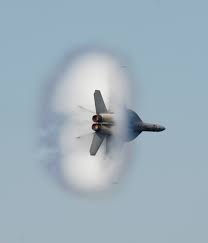Felix Baumgartners Weltraumsprung aus 36.576 Meter (Stratos-Sprung)
12.10.2012 um 10:57@Jantoschzacke @Thalassa ebend haben sie diese kömische wort gesagt @.@ die sagte :( ahhhh das wort "montag"
Is it really possible for a human being to break the speed of sound in freefall?
If calculations prove to be accurate, and Felix is successful in his attempts to control his position, he will accelerate from standstill to the speed of sound - that's 0 to approximately 690 miles per hour in 40 seconds or less.
What does it mean to "break the speed of sound"?
Breaking the speed of sound refers to catching up with - and surpassing - the speed at which sound waves are produced in the air. The speed of sound is affected by temperature: where the air is colder, sound travels more slowly. At about 100,000 feet above sea level, Felix Baumgartner will need to accelerate to about 690 miles per hour to match the speed of sound, known as Mach 1. Then if he continues to accelerate and surpasses the speed of sound, he'll be "supersonic."
Is there really a sound "barrier"?
No, it's a figure of speech. The concept stems from the mid-20th century, when early high-speed aircraft sometimes experienced extreme instability, and even broke up, as they neared the speed of sound. Today we know that such instability is caused by shock waves that build up in the "transonic" zone - the range of speeds approaching the speed of sound. Sometimes shock waves even collide with each other, a phenomenon known as the "shock-shock interaction," creating results that can be similar to an explosion. Fortunately, the impact of shock waves becomes less severe with higher altitude, because air becomes less dense. And once an object passes through that imaginary "sound barrier" to catch up with and surpass the speed of sound, flight is smooth.
What other hazards will Felix Baumgartner face as he attempts to break the speed of sound?
The list includes temperatures well below freezing, too little oxygen to breathe, the tendency to spin uncontrollably and air pressure so low that without protection blood is said to "boil" with vapor bubbles.
What will protect Felix Baumgartner from these hazards?
Strategies include intensive training to prepare him for possible instability: the team has developed a graduated, multi-stage test program in which he jumps from successively higher outdoor altitudes, as well as a choreographed step-off from the capsule so that he achieves a streamlined position. Equipment is also important: an innovative full-pressure suit and helmet provide oxygen, protection and pressurization, and a special drogue parachute is available for stabilization if necessary.
Why won't Felix reach terminal velocity before he breaks the speed of sound?
Terminal velocity, a concept familiar to skydivers, refers to the point at which a falling object stops accelerating. Drag, or resistance, is one of the key factors causing terminal velocity. Bailing out at a very high altitude, where the air is thin, should enable Felix to break the speed of sound before reaching more dense air that will create drag and eventually result in his terminal velocity. Still, he'll want to streamline his body as quickly as possible to aid his acceleration.
How will we know that Felix has broken the speed of sound?
Equipment in Felix's chest pack will capture and record the necessary data for review by the mission team as well as by the Fédération Aéronautique Internationale world governing body.
What can be learned by breaking the speed of sound in freefall?
The data gathered about the effects of supersonic freefall can provide valuable tools for researchers looking to develop safety procedures for the pilots and astronauts of today and tomorrow - and for future space tourists. Proof that a human can break the speed of sound in freefall could provide support for the development of sub-orbital bailout procedures that currently don't exist. In noting that the Red Bull Stratos team will be capturing as much physiological and environmental data as possible, medical director Jon Clark says: "We try to anticipate as much as we can about supersonic speed, but we really don't know, because nobody has done this before."


Nach 34 Sekunden ist er von der Kapsel bereits 5780 Meter entfernt. Sehen kann man da wahrscheinlich nur auf einer Kamera, die er mitführt, etwas. Und den Knall wird man in einer Hohe von immer noch über 30 Km wahrscheinlich auch nicht. (Sehen kann man einen Knall ja ohnehin nur sehr selten, aber auch die Schockwelle wird in dieser Höhe wohl keinen Dunstkegel erzeugen).kaltefüsse schrieb:ichhoffe das die kameras der kapsel so eingestellt sind, das wir felix fliegen sehn, er soll den schall nach nur 34sec durchbrechen, das ist ziemlich kurz, ich hofe das wir das durch die kapselkaemra sehn können den knall
Beim Durchqueren der Luftmassen, wird diese verdrängt. Die verdrängte Luftmasse hinterläßt einen "leeren" Raum, wenn auch nur sehr kurzzeitig. Auffgrund des Luftdruckes wird der "leere" Raum wieder mit Luft aufgefüllt, je schneller die Luft verdrängt wurde, desto schneller füllt sich der "leere" Luftraum, siehe zB. Überschallflug.Jantoschzacke schrieb:Mal ne andere Frage: Warum knallt es überhaupt, wenn man die Schallmauer durchbricht?